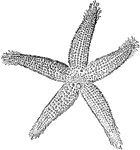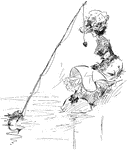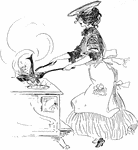
Cross Section View of a Sea Lamprey
An illustration of the median longitudinal section through anterior end of the sea lamprey. "a.v.o,…

Carp
Carp is a common name for various freshwater fish of the family Cyprinidae, a very large group of fish…

Wels Catfish
The wels catfish is a scaleless fresh and brackish water catfish recognizable by its broad, flat head…
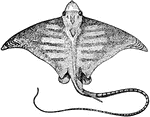
Eagle Ray
The Common Eagle Ray (Myliobatis aquila) is large ray in the Chondrichthyes class of cartilaginous fishes.
Remora
The remora (Echeneis remora) is a sucking fish with a flat disk on its head it uses to stick to larger…
Bramble Shark
The Bramble Shark (Echinorhinus brucus) is a species of shark distinguished by its thorn-like denticles…

Electric Eel
The Electric Eel (Electrophorus electricus) is a fish in the Gymnotidae family of naked-back knifefishes.
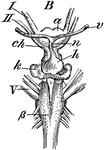
Skate Brain
"Brain of Skate (Raia batis), an elasmobranchiate fish. B, from below, in part enlarged: ch, optic chiasm;…
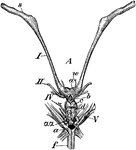
Skate Brain
"Brain of Skate (Raia batis), an elasmobranchiate fish. A, from above; s, olfactory bulbs; a, cerebral…

Elephantfish
The Elephantfish (Callorhinchus callorhynchus) is a species of fish in the Chimaeriformes order of chimaeras.

Emperor of Japan Angelfish
The Emperor of Japan (Holocanthus imperator) is a species of fish in the Pomacanthidae family of angelfishes.
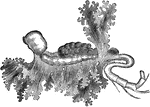
Parasitic Isopod
Entoniscus parasites is a parasitic isopod that feeds off and eventually replaces the tongues of fish…

Episemon
Episema were used in Greece as a symbol for a country, region, or used on a shield or badge. This episemon…
Copepod
Also known as fish lice, this is a species of copepod, a parasitic crustacean. "Female of Chondracathus…

Copepod
Also known as fish lice, this is a species of copepod, a parasitic crustacean. "Female of Chondracathus…
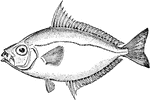
Common Ponyfish
The Common Ponyfish (Leiognathus equulus) is a species of ponyfish in the Leiognathidae family.
Golden Trahira
The Golden Trahira (Erythrinus unitaeniatus) is a fish in the Erythrinidae family of trahiras.

Pike Cranium
"Cartilaginous Cranium of the Pike (Esox lucius), with its intrinsic ossifications. A, top view; 3,…
Pike Cranium
"Cartilaginous Cranium of the Pike (Esox lucius), with its intrinsic ossifications. B, side view: V,…
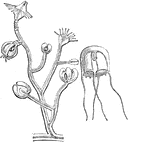
Eudendrium
An illustration of Eudendruim ramonsum. The Idrozoi are a class of the phylum of Cnidarians, and in…

California Sheephead
The California Sheephead (Semicossyphus pulcher) is a fish in the Labridae family of wrasses.

Orange Filefish
The Orange Filefish (Aluterus schoepfii) is a species of fish in the Monacanthidae family of filefish,…

Fins of Common Perch
"Fins of Common Perch. D, first dorsal; D', second dorsal; P, pectoral; V, ventral; A, anal; C, caudal."…

Skeleton of Perch
"Skeleton of Fish (Perch). a, intermaxillaries; b, nasal region; c, dentary bone of mandible; d, orbit…

Paradise Fish
The Paradise Fish (Macropodus opercularis) is a labyrinth fish in the Osphronemidae family of gouramies.

American Fourspot Flounder
The American Fourspot Flounder (Hippoglossina oblonga) is a fish in the Paralichthyidae family of large-tooth…

Lymphosporidium
An illustration of the adult amoeboid Lymphosporidium truttae, which was the cause of the brook-trout…
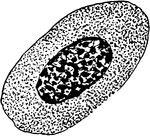
Lymphosporidium in Blood Cell
An illustration of Lymphosporidium truttae in the blood cell of a brook trout, which was the cause of…

Lymphosporidium in Blood Cell
An illustration of Lymphosporidium truttae in the blood cell of a brook trout with numerous sporoblasts,…

Fly Book for Fishing
"A case in the form of a book in which to keep fishing-flies. It has leaves of Bristol-board or other…

California Flying Fish
The California Flying Fish (Cheilopogon pinnatibarbatus californicus) is the largest species in the…

Shortnose Sturgeon Tail
"Heterocercal Caudal Fin of a Sturgeon (Acipenser brevirostris), showing the series of fulcrums, Fl,…
River Blackfish
The River Blackfish (Gadopsis marmoratus) is an Australian fish in the Percichthyidae family of temperate…

Gafftopsail Catfish
The Gafftopsail Catfish (Bagre marinus) is a fish in the Ariidae family of ariid catfish. It was also…
Shortnose Gar
The Shortnose Gar (Lepisosteus platostomus) is a fish in the Lepisosteidae family of garpikes.

Hotel De Ville
Hotel De Ville was constructed about 1370 in the second half of the fourteenth century. Frescos at one…

Parrot Fish
Tangrams, invented by the Chinese, are used to develop geometric thinking and spatial sense. Seven figures…

Beta Fish
Tangrams, invented by the Chinese, are used to develop geometric thinking and spatial sense. Seven figures…
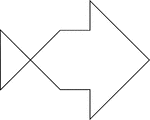
Parrot Fish
Tangrams, invented by the Chinese, are used to develop geometric thinking and spatial sense. Seven figures…

Beta Fish
Tangrams, invented by the Chinese, are used to develop geometric thinking and spatial sense. Seven figures…

Parrot Fish
Tangrams, invented by the Chinese, are used to develop geometric thinking and spatial sense. Seven figures…

Beta Fish
Tangrams, invented by the Chinese, are used to develop geometric thinking and spatial sense. Seven figures…
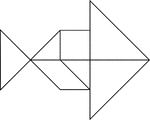
Parrot Fish
Tangrams, invented by the Chinese, are used to develop geometric thinking and spatial sense. Seven figures…

Beta Fish
Tangrams, invented by the Chinese, are used to develop geometric thinking and spatial sense. Seven figures…
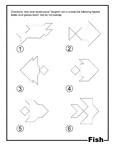
Fish Outline Tangram Card
Outlines of fish (shark, parrot fish, angelfish, flounder, hogfish, beta) made from tangram pieces.…
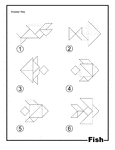
Fish Outline Solution Tangram Card
Solutions for outlines of fish (shark, parrot fish, angelfish, flounder, hogfish, beta) made from tangram…

Fish Silhouette Tangram Card
Silhouette outlines of fish (shark, parrot fish, angelfish, flounder, hogfish, beta) made from tangram…

Secretary Fish and General Grant Amused at English Outcry Over Alabama Claims
Secretary Fish and General Grant amused at the English outcry over the Alabama claims submitted to the…

Cuttlefish
Cuttlefish are marine animals of the order Sepiida belonging to the Cephalopoda class. Despite their…
Garpikes Fish
The gars, or garpikes, are members of the Lepisosteiformes (or Semionotiformes), an ancient order of…
Garpikes Fish
The spotted Gar (Lepisosteus oculatus) is a primitive freshwater fish of the family Lepisosteidae, native…

Marine Isopod
The marine isopod or sand flea (Caprella) is an omnivorous feeder that eats detritus, one-celled plants,…

